'Ձեռքս երթայ դառնայ ի Հող,Գիրքս մնայ յիշատակող'
Photo: Raffi Berberyan
Inscription in Bolorgir, St.James Cathedral, Armenian Quarter, Old City Jerusalem Photo @ Ruben Malayan
Manuscript spread, photo from Claude Mutafian archive
Armenian "magical" script (Nshan'agir Imastnots Նշանագիր Իմաստնոց) @ Ruben Malayan
Map: Max Planck (original version in color)
The biblical mount Ararat (Sis) Photography by Ruben Malayan @ All rights reserved
"I, Ewestat (Եւստաթ) the priest, laid this mosaic. (You), who enters this house, remember me and my brother Luke (Ղուկաս) to Christ.
Mosaic inscription (Erkatagir script) from Jerusalem. V to VII cent.
Photo from Claude Mutafian archive.
The historical context all makes it much likelier that the Georgian and Caucasian Albanian alphabets were modelled on the Armenian alphabet, which in turn was modelled on Greek (and other influences). Armenia at the time was largest and most influential polity among the South Caucasus kingdoms. Pan-Caucasian church councils assembled in Dvin, Armenia during this period, and missionary activity in the 4th-5th century Caucasus was also driven from Armenia out to Iberia and Albania and beyond, so the need for alphabet systems to express those neighbouring languages was paramount. Armenia also had greater contact with Greek scholars through its borders with the Roman East. Therefore, alphabets that appeared in Armenia, Iberia and Albania at the same time, that look extremely similar, can be explained by an ecclesiastical pan-Caucasian project led by Armenian clergy but with the express involvement of clergy from both other kingdoms (Greppin 1981, Russell 1999: 289, Rapp 2010: 139). (read more on Georgian/Armenian connection here, above two paragraphs are extracts from the thread)
Alef, alpha, ayb from variety of Near Eastern alphabets
Compiled & drawn in 2008 by Ruben Malayan
Erkatagir Alphabet by Ruben Malayan @ All rights reserved.
License this image
Grigor Tatevatzi, a philosopher and painter of the fourteenth century, gave a symbolic and aesthetic interpretation for the relationship between black (dark) text and the white space of the paper. According to his vision, apart from the evident purpose of good visibility and easy comprehension of words, the black color symbolized the pain of original sin, while the white color was a symbol of innocence at birth. The white margins surrounding the text represent the four sides of the cross.
Erkatagir on parchment, image courtesy Claude Mutafian
Verin Noravankʻ Gospels, Grigor, Monk, of Verin Noravankʻ,
active 15th century, Library of Congress
A page from a gospel manuscript, showing the frequent practice of a combined use of two or more scripts.
Erkatagir, Mouch Bible, image courtesy Claude Mutafian 17 3.11
Script Classification
Erkata'gir (Երկատագիր) The script is monumental by style, majuscule, the letters are large, very erect, with gracefully rounded lines connecting the vertical elements of the letters or springing from them. All the letters of the Erkata'gir script were written on the base line between two imaginary parallel lines, with ascending and descending elements being only slightly extended with the exception of two letters whose elements extend more drastically. Across the range of manuscripts, up to 10 varieties of this script are observable (Akinian 1938). The aesthetics of Angular Erkata'gir resemble graceful Greek and Roman inscriptions: letters are large, erect and clearly separated. Round Erkata'gir is characterized by a contrast between thick vertical forms and razor-thin connecting curved strokes. The proportion of height to width is typically 5:3, 4:3, 3:2. The same proportion is applied to the width of characters and the distances between them. The columns are well defined and characters are clearly separated, which gives the script a more geometrical essence and feeling. Straight Erkata'gir differs by slanting to the right at varying angles. Connecting strokes have more variety and the proportion of height to width is 1:1. Characters are placed more closely than in Round Erkata'gir. The height of letters comprises half of the space between lines. These factors give this particular script a certain dynamism (Kouymjian 2002).
Tatev Monastery, Syunik, Armenia 9th c., Photo @ Ruben Malayan
Bulle 1409 Image courtesy Claude Mutafian
An example of Bolorgir in a printed book - Aybbenakan ev Qristuneakan K.Polis 1712 Collection of NLA.
Birth certificate Author's Paternal Grandmother, Arusiak Adamyants born on April 24, 1904 in Shushi
The text is bilingual with Russian on the left. This is an good example of developed writing culture present in Artsakh at the turn of the 20th century as it is executed by an anonymous clerk in the Municipality of Shushi
(then part of the Russian Empire).
Image: personal archive of Ruben Malayan
1845 Sła'gir (Շխագիր), Matenadaran, photo Ruben Malayan
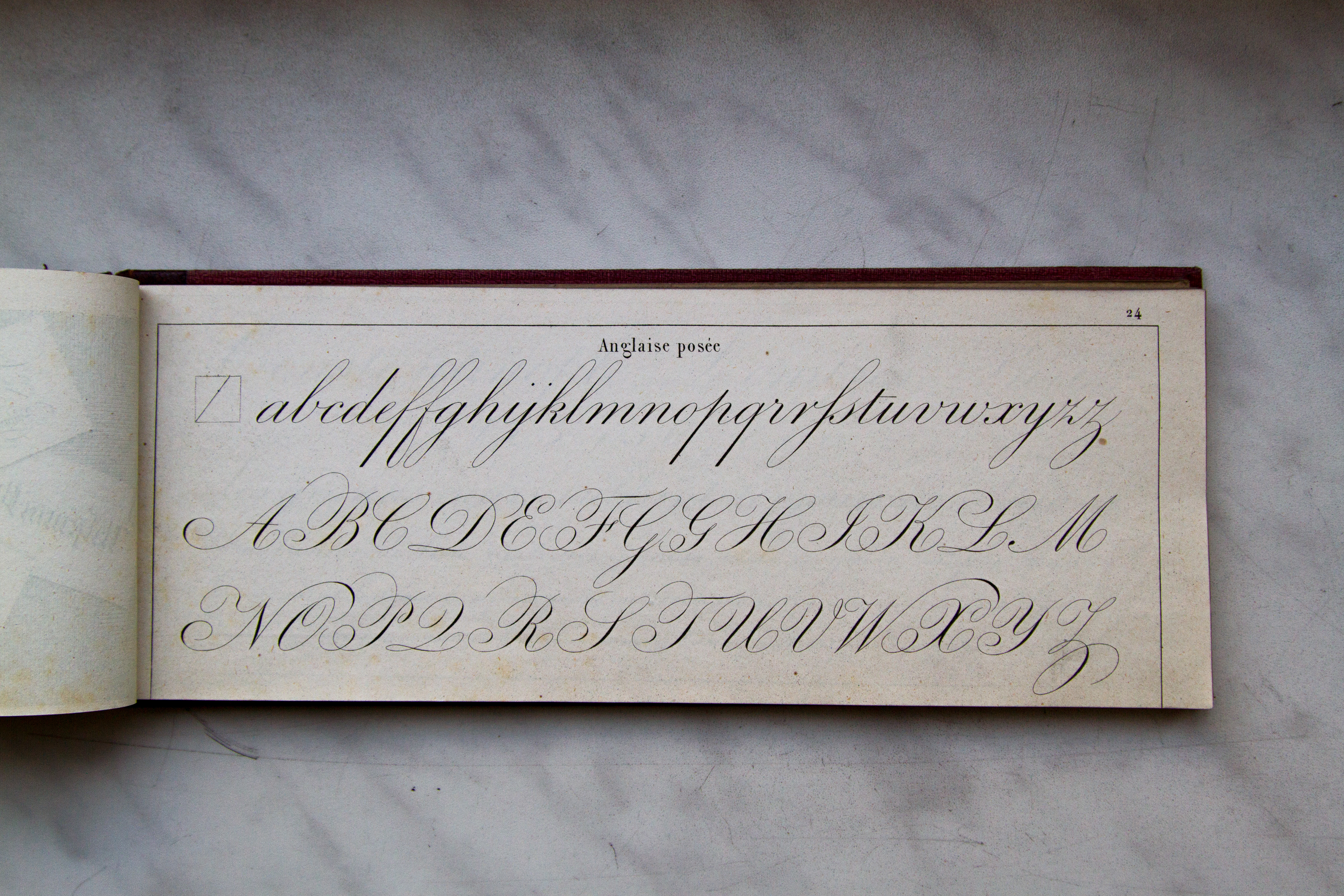
1859-69 Paris Հայկական Գեղագրություն Ամբրոսիոս Վարդապետ Գալֆայեան NLA
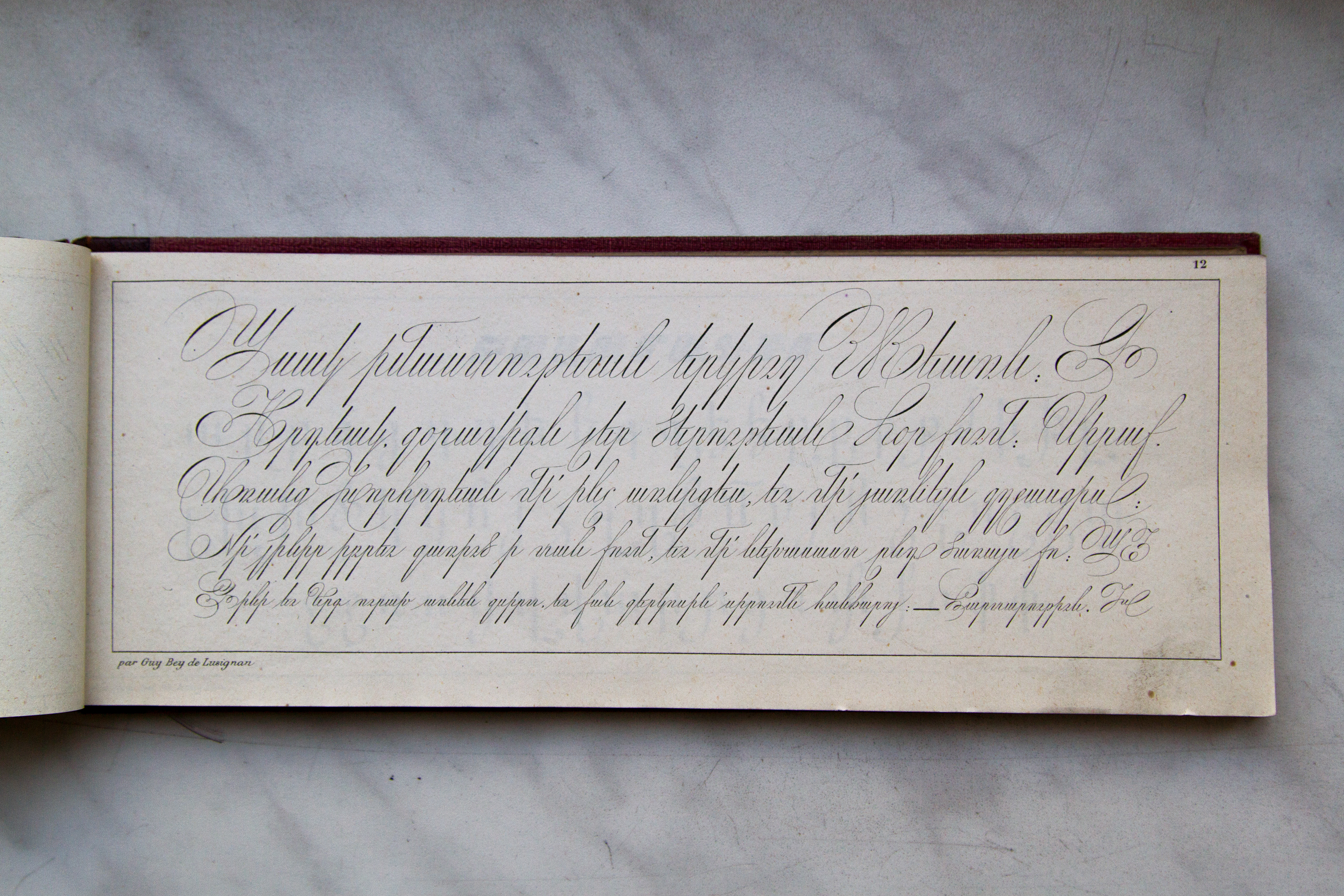
1859-69 Paris Հայկական Գեղագրություն Ամբրոսիոս Վարդապետ Գալֆայեան NLA
Letter from students to Smbat Shahazizean, GAT (Fond Lazarean) 1897 Moscow
Illustrated by Vardges Sureniants
Letter from students to Smbat Shahazizean, GAT (Fond Lazarean) 1897 Moscow
Illustrated by Vardges Sureniants
Example of Notr'gir script
Image courtesy Claude Mutafian
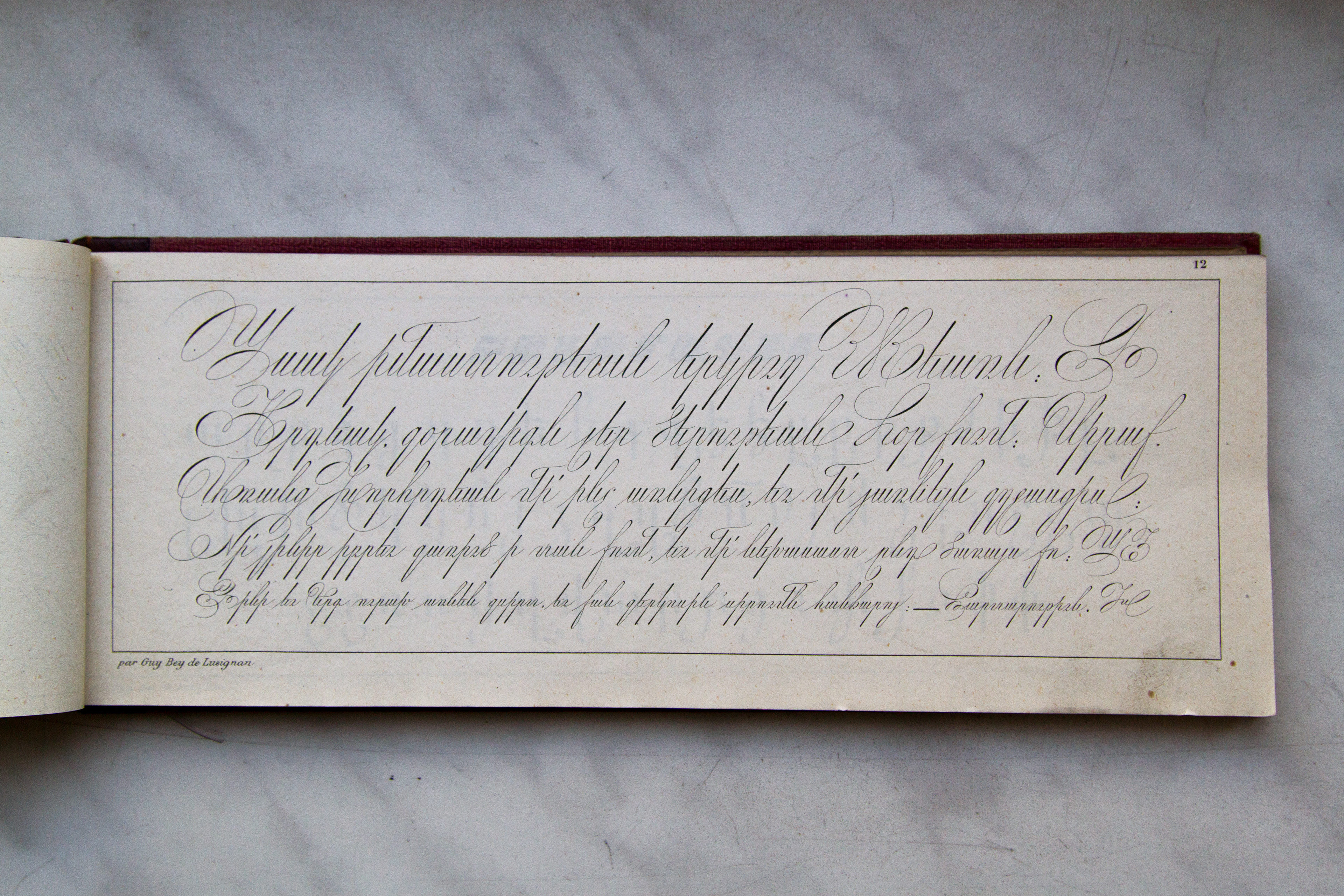
Հայկական Գեղագրություն (2nd edition) Ամբրոսիոս Վարդապետ Գալֆայեան Ambroise Calfa Paris 1855
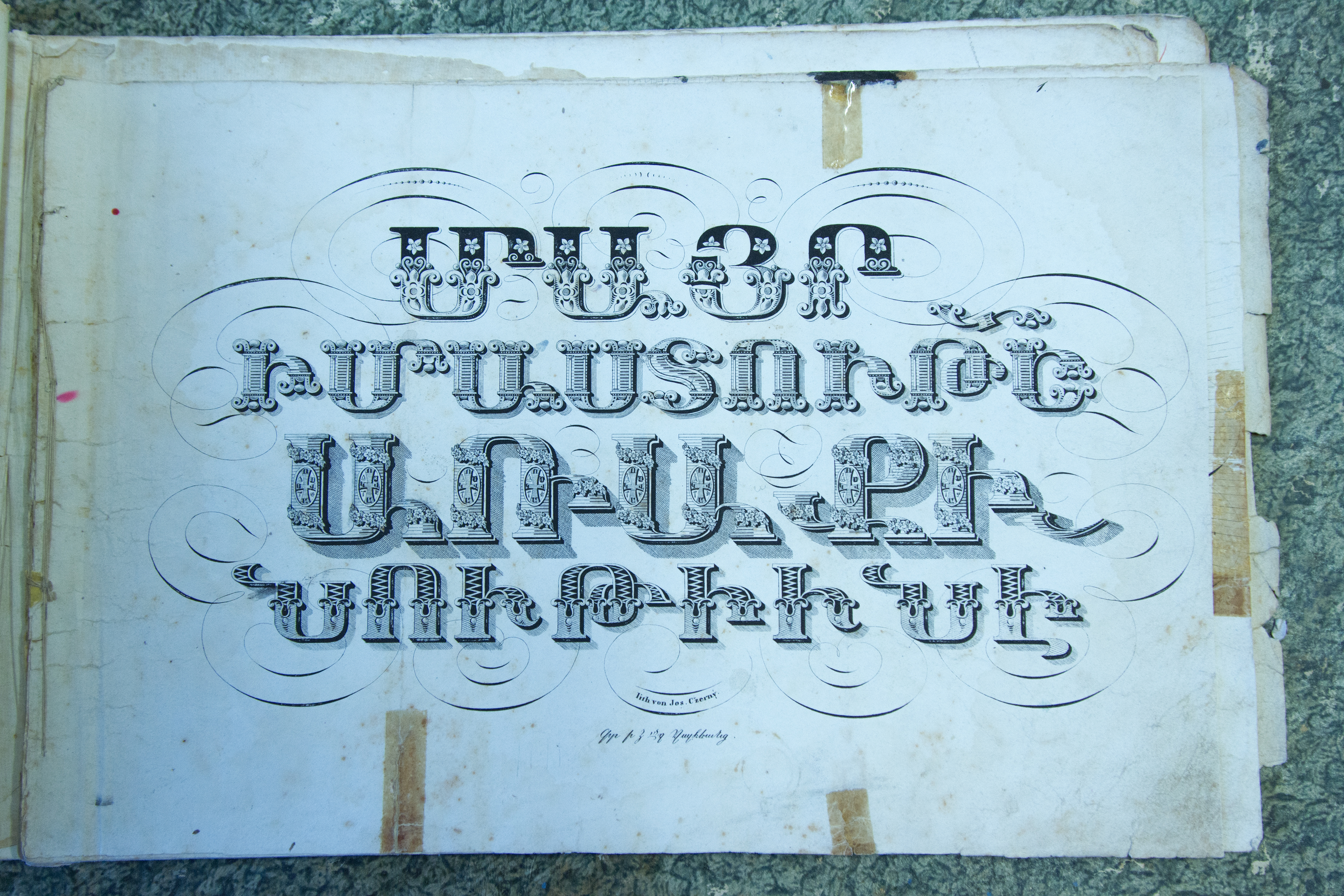
1837 Vienna Calligraphy Vayelchagrutiun by A. Palcheyants
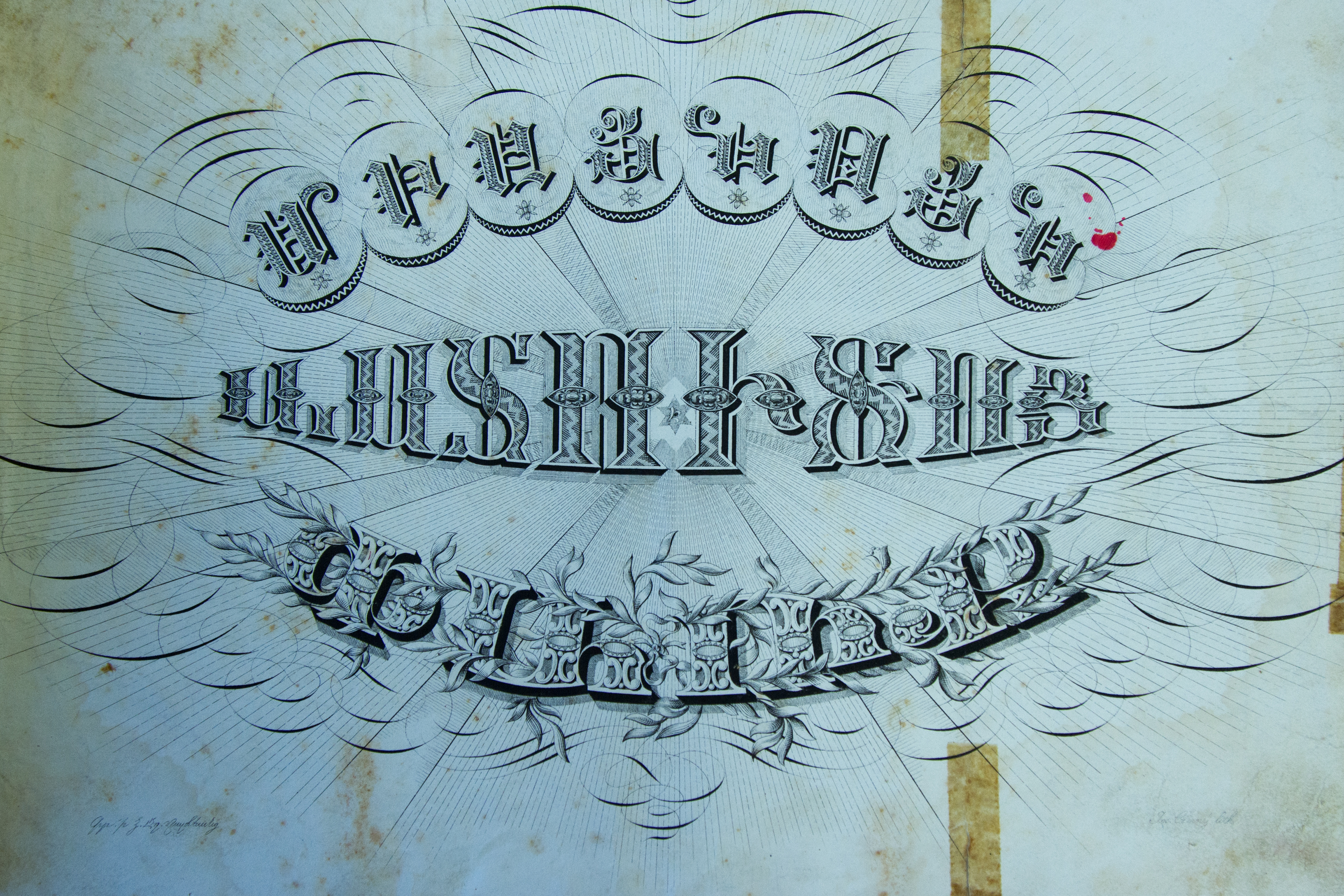
1837 Vienna Calligraphy Vayelchagrutiun by A. Palcheyants
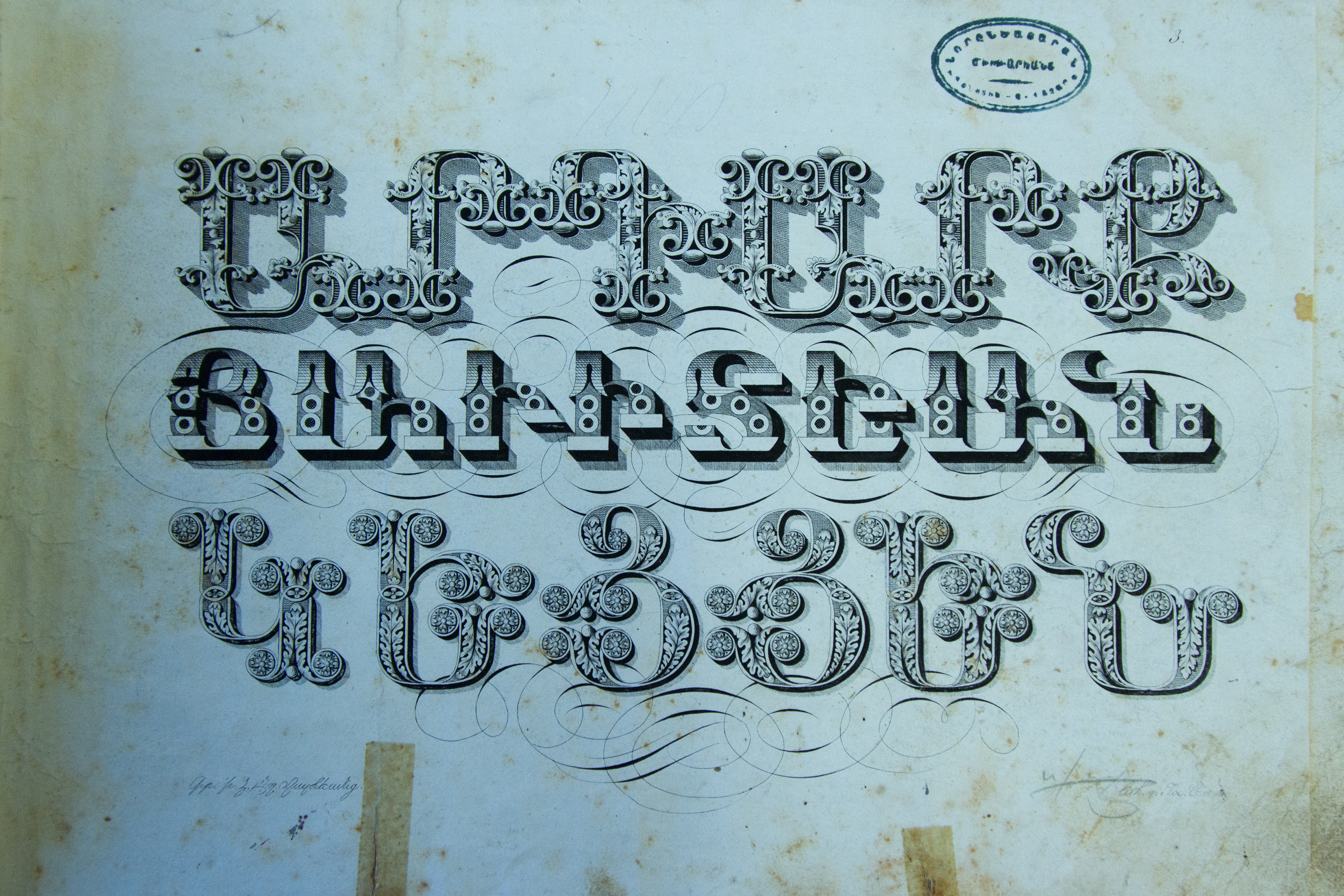
1837 Vienna Calligraphy Vayelchagrutiun by A. Palcheyants
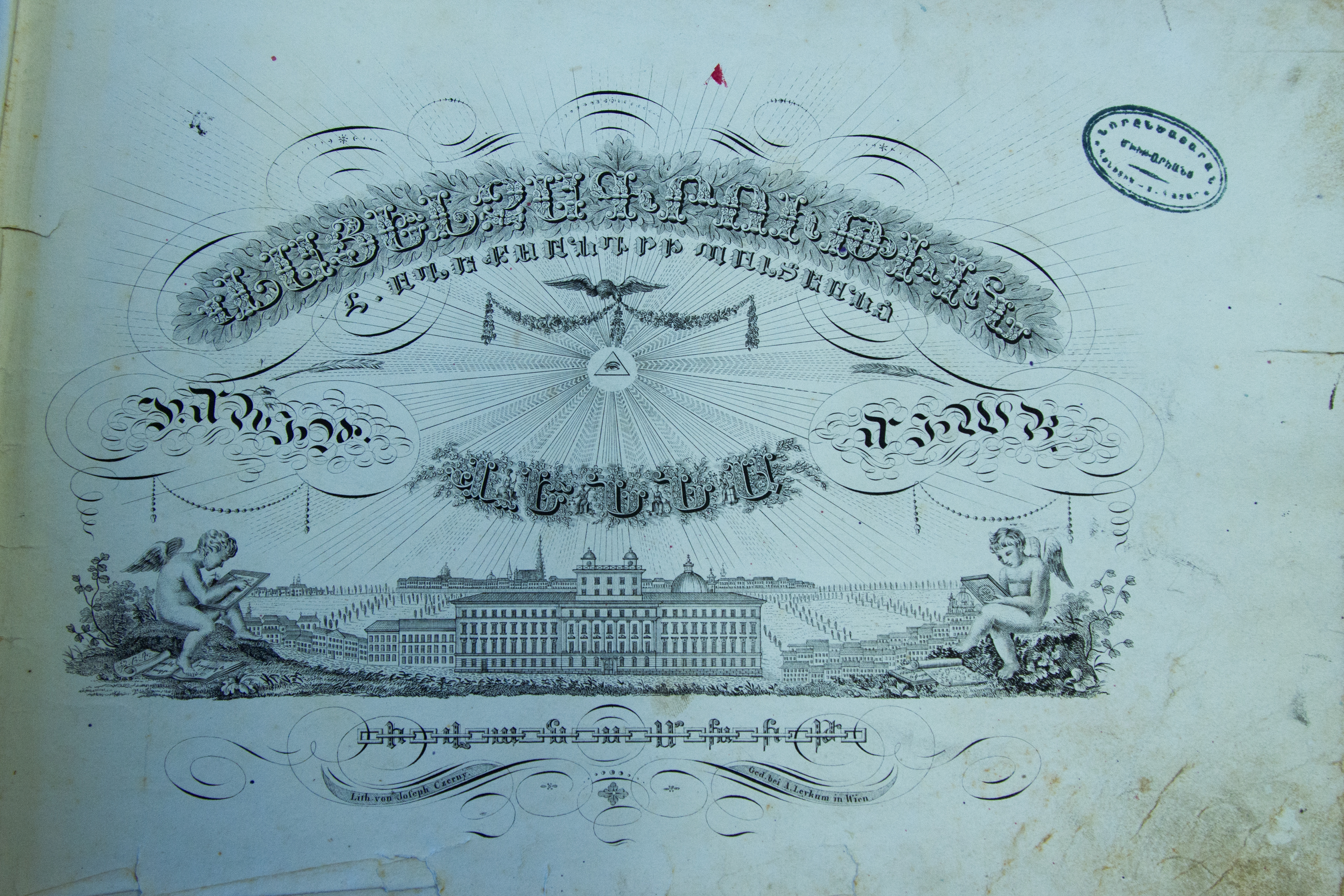
1837 Vienna Calligraphy Vayelchagrutiun by A. Palcheyants
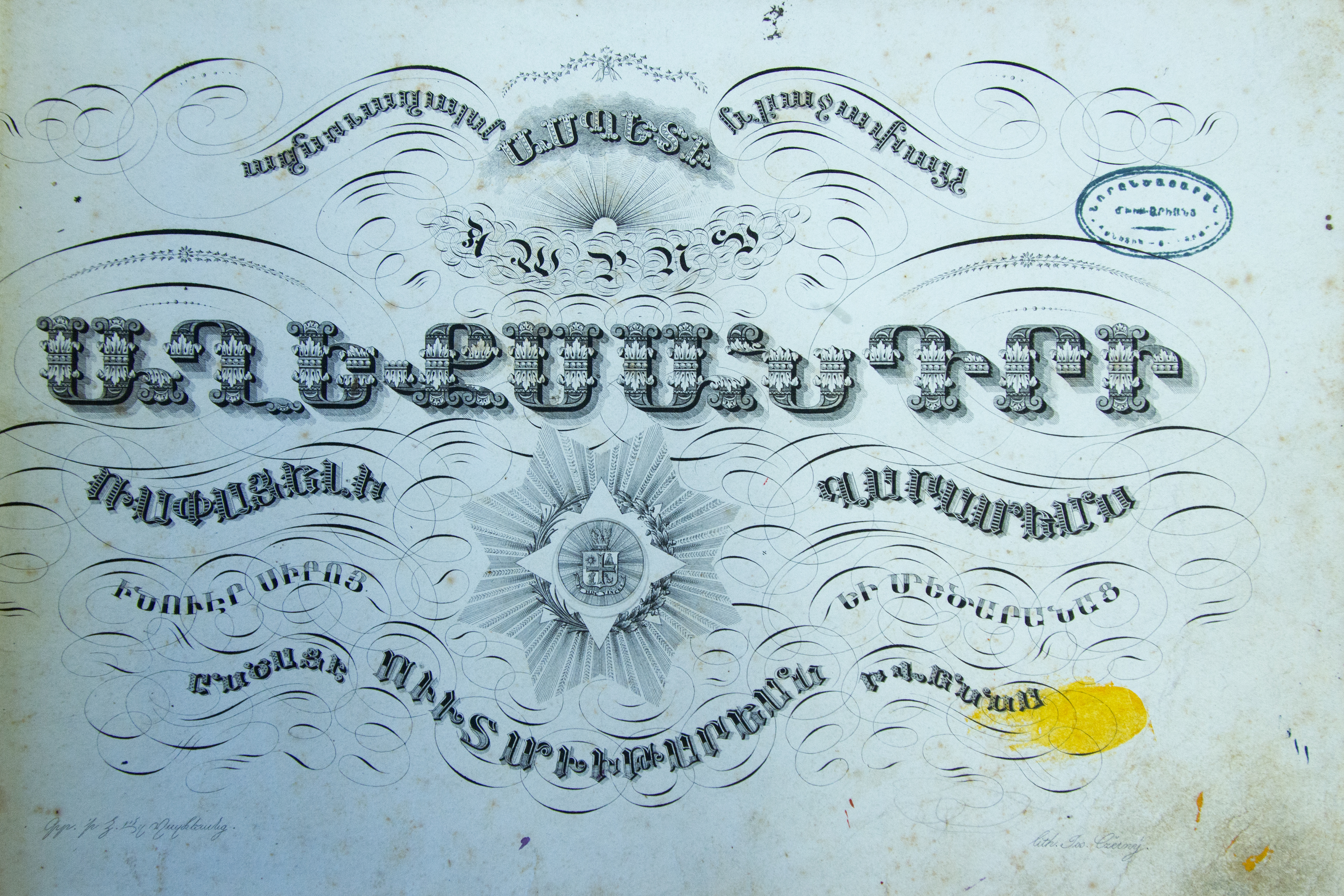
1837 Vienna Calligraphy Vayelchagrutiun by A. Palcheyants

1837 Vienna Calligraphy Vayelchagrutiun by A. Palcheyants
2. J.R. Russell, "On the origins and Invention of the Armenian Script", Le Museon 1994
3. A. Abrahamyan "History of Armenian letters and writing" Erevan 1959
4. M. Stone, D. Kouymjian, H. Lehmann "Album of Armenian Paleography", Aarhus, 2002
5. Nerses Akinian "The discovery of the Armenian Alphabet", Handes Amsorya 52 (1938)
6. Dikran Kouymjian "Armeno-Greek Papyrus" (series of articles)
7. J.R.Russell "Mashtots' the Magician" Harvard University
8. Simeon Varjapet Phachalean "Haykakan Geghagrutiun" (Armenian calligraphy) (study schoolbook) Nor Nachijevan 1870 (Yerevan Museum of Literature and Art, fond of G. Tchatalbachian No. 426a)
9. Yakovbos Tasean (P. Jacobus Dashian) "Overview of Armenian Paleography" 1989 Vienna (Handes Amsorya, 11 (1897) nos. 2-12; 12 (1898), nos. 1-6)
1 The British Cyclopedia of the Arts, Sciences and History. Published by Wm. S. Orr and co., 1838
2 J.R.Russell "Mashtots' the Magician" Harvard University p. 4
3 J.R.Russell "Mashtots' the Magician" Harvard University p. 15
4 A. Abrahamyan "History of Armenian letters and writing" Erevan 1959 p. 98
5 D. Kouymjian, "Script Classification," M. Stone, D. Kouymjian, H. Lehmann, Album of Armenian Paleography, Aarhus, 2002, pp. 63-75
Junker, H.F.J. 1925-26. "Das Awestaalphabet und der Ursprung der armenischen und georgischen Schrift"
Mueller, F.R. 1864. "Ueber den Ursprung der armenischen Schrift"
Muravyov, S.N. 1982. "Three Ancient Alphabets of the Caucasus: Their Differences, Their Similarity and The Problem of Their Affinity."
Perikhanyan, A.G. 1966. "Towards the Origin of Armenian Writing," in The Decipherement and Intepretation of the Scripts of the Ancient East.
Russell, J.R. 1999. "Alphabets" in Late Antiquity: A Guide to the Postclassical World
Sanjian, A. 1996. "The Armenian Alphabet". In Daniels & Bright, The World's Writing Systems.
Seibt, W. 2011. "The Creation of the Caucasus Alphabets as Phenomenon of Cultural History."
Taylor, I. 1899. "The History of Alphabet: An Account of the Origin and Development of Letters."